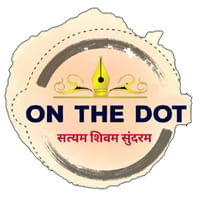Ganesh Chaturthi is one of the most widely celebrated Hindu festivals in India, dedicated to Lord Ganesha, the elephant-headed deity and the remover of obstacles. This auspicious occasion is observed with immense joy and enthusiasm by millions of devotees across the country. The festival falls in the month of Bhadrapada, typically between August and September, and lasts for ten days, culminating with the grand immersion of Ganesha idols in water bodies.
The Origins and Significance:
Ganesh Chaturthi traces its roots back to ancient times when it was celebrated by Chhatrapati Shivaji Maharaj and later popularized by Indian freedom fighter Lokmanya Tilak to foster a sense of unity among people during the British rule. Since then, the festival has become a significant part of India’s cultural fabric.
The festival holds immense significance in Hindu mythology. According to the legends, Goddess Parvati, the consort of Lord Shiva, created Lord Ganesha from sandalwood paste to guard her privacy while she bathed. Unaware of Ganesha’s identity, Lord Shiva, who was away at that time, refused entry to his own abode. A fierce battle ensued between Ganesha and Shiva’s followers, leading to Ganesha’s beheading. Realizing the gravity of the situation, Lord Shiva restored Ganesha’s life by attaching an elephant’s head to his body, making him unique and worshipped as Lord Ganesha.
The Celebrations:
The preparations for Ganesh Chaturthi commence days in advance. Artisans and devotees work together to create beautifully crafted clay idols of Lord Ganesha, varying in size, from small ones for homes to grand and ornate ones for public pandals (temporary structures). These idols are adorned with colorful clothes and jewelry to add a touch of grandeur.
The celebrations begin with the installation of Ganesha idols in homes and pandals. Priests perform intricate rituals and chant sacred mantras to invoke the presence of Lord Ganesha. During the ten-day festival, devotees offer flowers, coconuts, modaks (a traditional sweet), and other delicacies as a symbol of devotion.
Public pandals become centers of festivity and religious fervor. People from all walks of life come together to seek blessings and participate in cultural events like music, dance, and dramas, portraying stories from Hindu mythology.
Visarjan or Immersion:
The grand finale of Ganesh Chaturthi is the Visarjan, where the Ganesha idols are carried in colorful processions accompanied by enthusiastic chanting and dancing. Devotees bid farewell to the beloved Lord, expressing gratitude for his divine presence during the festival. The immersion of the idols takes place in rivers, lakes, or the sea, symbolizing Lord Ganesha’s return to his heavenly abode.
Eco-Friendly Celebrations:
In recent years, there has been a growing awareness of environmental concerns during the festival. Many organizers and devotees have shifted towards eco-friendly idols made of clay and natural colors, reducing the pollution caused by the immersion of idols made from non-biodegradable materials.
Ganesh Chaturthi is a celebration of joy, unity, and devotion. It brings people from diverse backgrounds together in the spirit of reverence and camaraderie. The festival not only honors the beloved deity, Lord Ganesha, but also instills a sense of responsibility towards the environment. As we celebrate this auspicious occasion, let us strive to preserve our traditions while respecting nature and promoting sustainable practices. Ganpati Bappa Morya!




